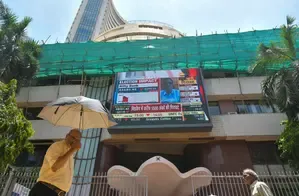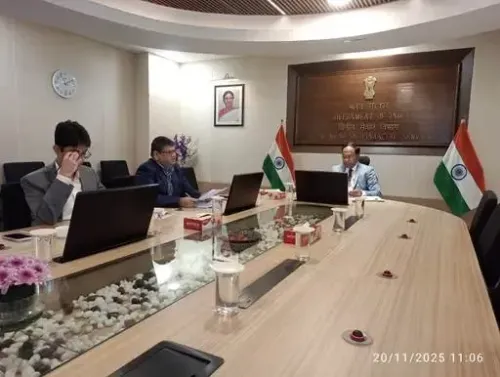Will Renewable Energy's Share in India's Power Mix Exceed 35% by 2030?

Synopsis
Key Takeaways
- Renewable energy share expected to surpass 35% by 2030.
- 200 GW of capacity is projected to be added from FY25 to FY30.
- Stable outlook driven by policy support and competitive tariffs.
- Execution challenges include land and transmission issues.
- Battery Energy Storage Systems are key for grid stability.
New Delhi, Nov 20 (NationPress) The contribution of renewable energy (RE) to India’s power generation, including large hydroelectric sources, is projected to surpass 35 percent by the end of FY30, up from 22.1 percent in FY25. This increase is anticipated to be fueled by an additional 200 GW of capacity added between FY25 and FY30, as indicated by a report released on Thursday.
The success of this endeavor relies heavily on the effective execution of existing projects, including the bidding and signing of Power Purchase Agreements (PPAs), as well as the establishment of sufficient transmission infrastructure. Timely bidding and PPA signings by central nodal agencies are essential, as highlighted by the report from the rating agency ICRA.
The outlook for the renewable energy sector is considered “stable,” driven by robust policy support, competitive tariffs, and sustainability efforts by major commercial and industrial (C&I) consumers.
Nonetheless, challenges persist, particularly in project execution, which includes land acquisition, transmission infrastructure issues, delays in PPA signings, and fluctuations in equipment costs and utility finances.
After awarding a substantial RE capacity of 47.3 GW in FY24, followed by 40.6 GW in FY25, bidding activity has significantly slowed this year, with only 5.8 GW awarded in the first 8 months of FY26. The total unsigned PPA capacity remains considerable, estimated at around 40-45 GW, according to an industry check, as noted in the report.
Girishkumar Kadam, senior vice president at ICRA, stated that “The downturn in new project bids and delays in PPA signings for substantial RE capacity by central nodal agencies reflect concerns regarding available transmission connectivity for the RE sector. Enhancing both storage capacity and grid strength at both state and inter-state levels in a timely fashion is crucial as the share of renewables rises in the generation mix.”
With India facing challenges related to variability in renewable generation, Battery Energy Storage Systems (BESS) have become vital for maintaining grid stability. The government has implemented viability gap funding for BESS capacities and extended transmission charge waivers for storage projects until 2028, according to the report.
Since April 2024 to October 2025, central nodal agencies and state discoms have awarded standalone BESS projects totaling over 20 GWh. Additionally, the share of round-the-clock (RTC), firm, and dispatchable renewable energy (FDRE) projects, as well as solar plus storage initiatives, constituted approximately 90 percent of the total RE capacity awarded in the first 8 months of FY26.
Furthermore, the notable decrease in battery prices over the past decade has contributed to lowering the cost of energy storage and the global adoption of BESS projects. According to ICRA, the levelized cost of storage for BESS providing 2-4 hours of storage is currently estimated to be relatively high, ranging from Rs. 4.0-7.0 per unit, compared to Rs. 5.0 per unit for Pumped Storage Hydropower (PSP) projects.
This represents a significant improvement from the prior level of over Rs. 8.0-9.0 per unit recorded in 2022. Although BESS costs for 4-hour storage remain above those of PSP, the execution risks and development timelines for BESS projects are generally lower, according to the report.
Regarding the competitiveness of standalone BESS projects, Kadam remarked: “While BESS projects have shorter lifespans and necessitate replacement capital expenditures, the continued decrease in battery prices is likely to encourage greater adoption.”









